Good day, coqui! It’s time to roll up our toga sleeves and thresh some barley… we have some Roman porridge to make! In the weeks to come, we are going to continue to look at some key areas of Roman food resources and this recipe is a part of a series that will be exploring The Mediterranean Triad; the three most valued agricultural resources during Classical Antiquity: Grapes, Grains and Olives.

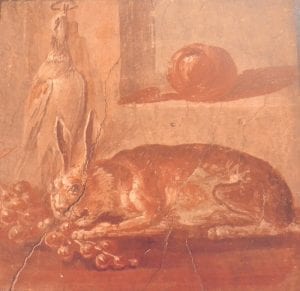
‘The Mediterranean Triad’ is a term used to describe the three most prominent crops in the Classical Mediterranean diet: Grapes, Grains and Olives. These crops were central to the Roman diet in that they were versatile and commonly used components of Roman food preparation, cooking and medicine. Grapes were consumed as fruit, wine and sauces; grains were consumed as breads, cakes, porridges and digestive aids; and olives were conserved and consumed as fruit or used for many other daily purposes in the form of oil.
We can see the Mediterranean Triad and its central nature to the Roman diet as it is represented frequently in the Roman archaeological record: Archaeobotanical evidence such as olive pits, grape seeds and whole grains; technological evidence such as quern-stones (grain mills), olive and grape presses, and ovens or hearths; and pictorial evidence such as frescoes, coins or reliefs. Another key archaeological element that demonstrates how much grape, grain and olive products were being transported throughout the Empire are ceramic transport amphorae.
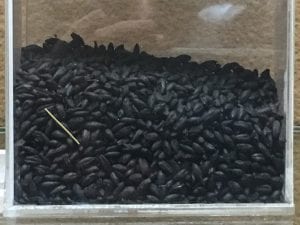
This article is the second in the Mediterranean Triad series and it will briefly explore cereals (grains) and their presence in the early Mediterranean diet. Grains were first cultivated in the Levant and Fertile Crescent regions during the late Neolithic period. This was a time when hunters and gatherers began to realise that wild grasses could be domesticated, the seeds could be sown, and annual crops could be produced. As these early farming communities slowly migrated westward throughout the Mediterranean regions, on both the northern and southern shores, agricultural practices along with animal domestication and husbandry moved with them westward. Farming practices were also moving eastward and were also being implemented in India and China during this revolutionary period of human history.
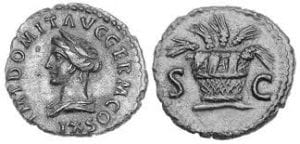
The importance of grain in the early diet of the Levantine and Mediterranean-region is visible in many different ways in the archaeological record. In Mesopotamia, cuneiform tablets depicted the first written references ever to barley on a tablet that documents the administration and allocation of grain. In Egypt we find hieroglyphs depicting bread-making practices, ploughing of grain fields, and the worship of Osiris: a god who was assumed to be responsible for the annual flooding of the Nile and the healthy crops that followed. Ceres, the Roman goddess of grain crops and agriculture, was represented in Roman sculpture, temples, early written inscriptions, and on coinage. In the Bay of Naples, owing to the violent eruption of Mount Vesuvius in 79 AD, we also have some incredibly well-preserved archaeobotanical evidence in the archaeological record: carbonised wheat, spelt, barley and millet. In Rome, and its surrounding and provincial territories, grain was grown locally or imported in high volume from local or confiscated agricultural areas. Grain was consumed whole, after soaking or boiling, or as breads, cakes and porridges produced from flour after milling in manual or large commercial grain mills. Along with olive oil, grain was a major component of the Annonae Urbis and Militaris, the state-controlled food doles, that supplied all Romans with food rations in order to keep the populace and its military well-fed and peaceful. We can estimate these volumes by studying ceramic transport amphorae that were used to import and export these foodstuffs throughout the Empire.
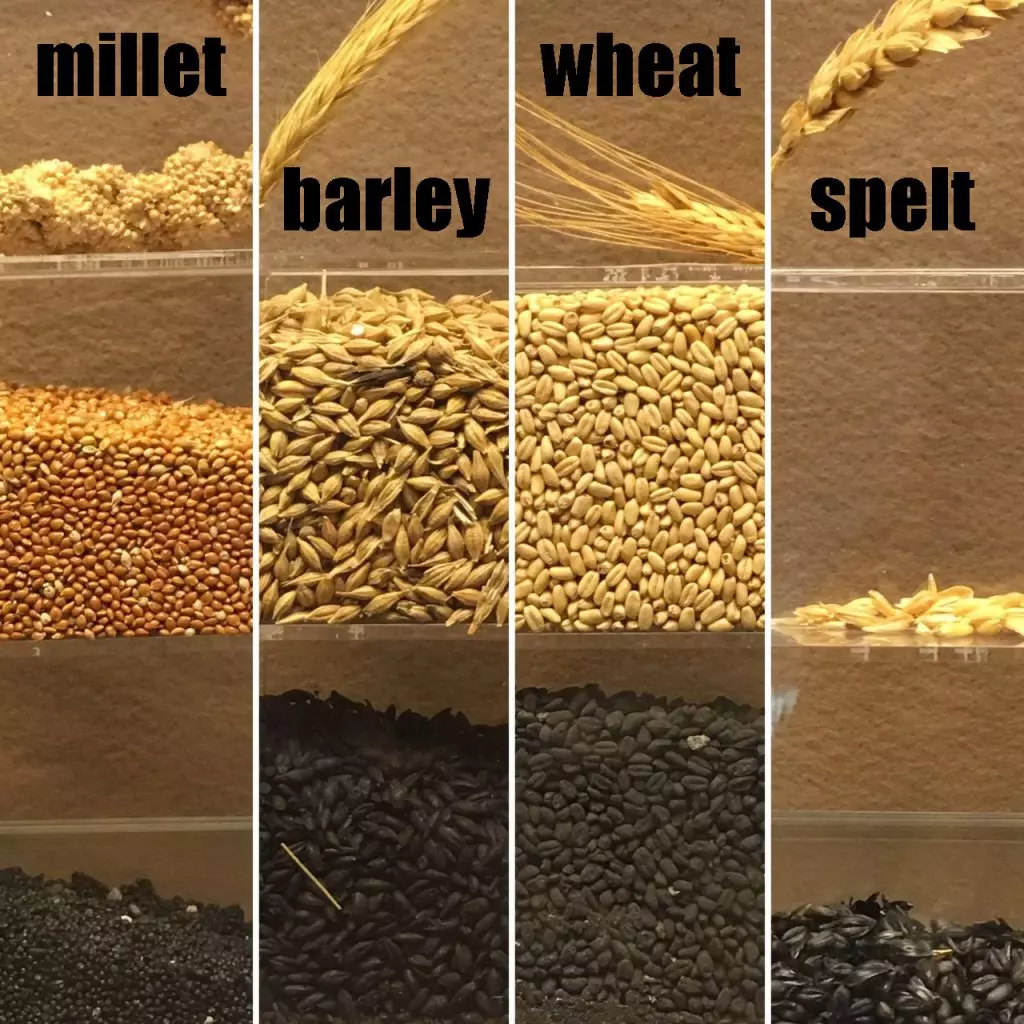

If we want to explore some literary representations of grains during Classical Antiquity, it is always best to turn to the documentary record. Pliny the Elder provides us with several references and recipes on how to prepare bread and cereals in his writings titled ‘Historia Naturalis’ (circa 77-79 AD). One of the recipes that he presents in this document is for a simple Roman polentam, or a porridge made of barley. In XVIII.14, Pliny tells us that barley is one of the oldest foods known to man and that the Greeks made their own version of polentam, called hordearii, that was often served to the gladiators. Now if that doesn’t tell you how reliable, nutritious and energizing this porridge was, I don’t know what will! So if you’re ready to taste a bit of history and dine like a gladiator, roll up your sleeves and dust off your quern-stones because we’re going to make barley porridge like the Romans! Here’s what you’re going to need:
The Mediterranean Triad – Grapes, Grains and Olives: Polentam (Pulmentum)
INGREDIENTS
4 ½ cups (660 gr) of whole dry barley
2/3 cup (100 gr) whole flax seed
¼ cup (16 gr) of whole coriander seed
1/2 tsp of salt
IMPLEMENTS
A manual grain mill
-or-
A mortar and pestle
-or-
A food processor
-or-
Mixer with grain mill attachment (KitchenAid, for example)
PREPARATION
Pliny the Elder tells us how to prepare Polentam like so:
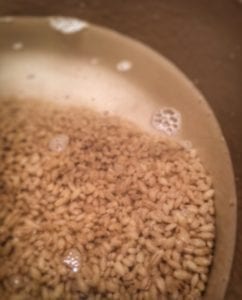
‘Antiquissimum in cibis hordeum, sicut Atheniensium ritu Menandro auctore apparet et gladiatorum cognomine, qui hordearii vocabantur. polentam quoque Graeci non aliunde praeferunt. pluribus fit haec modis. Graeci perfusum aqua hordeum siccant nocte una ac postero die frigunt, dein molis frangunt.
sunt qui vehementius tostum rursus exigua aqua adspergant et siccent, priusquam molant. alii vero virentibus spicis decussum hordeum recens purgant madidumque in pila tundunt atque in corbibus eluunt ac siccatum sole rursus tundunt et purgatum molunt. quocumque autem genere praeparato vicenis hordei libris ternas seminis lini et coriandri selibram salisque acetabulum, torrentes omnia ante, miscent in mola.
qui diutius volunt servare, cum polline ac furfuribus suis condunt novis fictilibus. Italia sine perfusione tostum in subtilem farinam molit, isdem additis atque etiam milio.
Panem ex hordeo antiquis usitatum vita damnavit, quadripedumque fere cibus est,’
From this passage we can understand the following (in English):
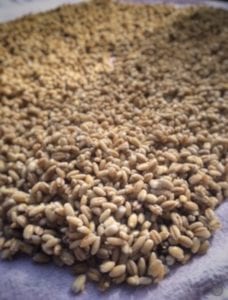
‘Barley is one of the most ancient aliments of man, a fact that is proved by a custom of the Athenians, mentioned by Menander,1 as also by the name of “hordearii,” that used to be given to gladiators. The Greeks, too, prefer barley to anything else for making polenta. This food is made in various ways: in Greece, the barley is first steeped in water, and then left a night to dry. The next day they parch it, and then grind it in the mill. Some persons parch it more highly, and then sprinkle it again with a little water; after which they dry it for grinding. Others shake the grain from out of the ear while green, and, after cleaning and soaking it in water, pound it in a mortar. They then wash the paste in baskets, and leave it to dry in the sun; after which they pound it again, clean it, and grind it in the mill. But whatever the mode of preparation adopted, the proportions are always twenty pounds of barley to three pounds of linseed, half a pound of coriander, and fifteen drachmæ of salt: the ingredients are first parched, and then ground in the mill.
Those who want it for keeping, store it in new earthen vessels, with fine flour and bran. In Italy, the barley is parched without being steeped in water, and then ground to a fine meal, with the addition of the ingredients already mentioned, and some millet as well. Barley bread, which was extensively used by the ancients, has now fallen into universal disrepute, and is mostly used as a food for cattle only.’
(Source: penelope.uchicago.edu and perseus.tufts.edu)
Using Pliny’s ingredients, quantities and guidelines, here is how I prepared the barley porridge:
- Begin by soaking the barley groats for an entire day from morning until bedtime. Pour the dry groats into a large bowl and cover it in water. Leave it to soak and swell until bedtime.
- Before bed, pour the barley into a colander and drain out all of the water. Spread the wet groats onto a flat baking tray or cookie sheet and let them dry out overnight.
- The next morning, place the barley groats on the baking tray into the oven and heat your oven to 350F/180C/Gas Mark 4 and lightly roast the barley until the groats are dry and begin to turn slightly golden. Remove the tray before the groats become a light brown or before they begin to harden too much.
- Remove the barley from the oven and prepare to grind the groats. Your choice in grinding implement will matter very much in this next step.
- MANUAL GRAIN MILL: I chose to use this method because I enjoy the back-breaking labour involved in manual milling so that I can connect with the original experience as much as possible. You, dear coquus, can choose to do the same or live vicariously through me by watching the milling video and then opting for one of the user-friendly options below. If you do choose to mill your own barley, see the video below on how to use a manual grain mill. Mill the barley and the coriander together on a coarse setting so that you are cracking the husk of the groats fully and milling the grains into a coarse texture, not a fine, flour-like texture.
- GRAIN MILL ATTACHMENT FOR FOOD PROCESSORS: Mill the barley and the coriander together on a coarse setting so that you are cracking the husk of the barley fully and milling the grain in a coarse texture, not a fine texture, flour-like texture.
- MORTAR AND PESTLE: Soak the barley again for an hour to soften the grain. Drain the barley and then mulch the grain and coriander together batch by batch depending on the size of your mortar basin.
- FOOD PROCESSOR (DICER BLADE): Soak the barley again for an hour to soften the grain. Process the grain and coriander together batch by batch depending on the size of your processor container. Be mindful of dicing/processing the grain too much. This will take a bit of time as the grain is durable but make sure that you process it only until it reaches a coarse texture, nothing finer. You don’t want pablum.
- Add the flax seed and salt in with the ground grain and fold it all together. You now have a dry mixture that you can store for later use or prepare immediately for breakfast, lunch or dinner!

Pliny tells us how to store this ground barley but he does not state how to cook the porridge or make it easier to consume. I am assuming that you would mix it with hot or cold water. I chose to boil mine like traditional porridge using 1 cup of water per cup of dried porridge. Simmer it for 5 mins or more until the porridge thickens and then serve!
So how did our friend Pliny eat his porridge once it was fully prepared? Only he knows, I suppose. Polentam was also a meal that consumed throughout the day by Romans, it wasn’t strictly a breakfast porridge, as many of us would assume. Polentam was often prepared with cheese, honey, meat or fish. In the modern era we enjoy our porridges in the morning only with a bit of milk, fruit, honey or brown sugar. I decided to add a drizzle of honey and some pear slices and pomegranate seeds to my barley porridge as these additions were available to Romans during this time period. Mixing in some honey and fresh fruit knocked this porridge straight out of the park. The flavour of fruit and coriander combined with the nuttiness of the barley was such a delight! By the Gods, I will never go back to cream of wheat again… but I will be sneaking some milk on top of this barley porridge the next time to make it a bit creamier in texture.

Pliny’s ‘Polentam’ recipe produced a wholesome, filling and aromatic porridge that has a much stronger texture than traditional oatmeal and an almost floral accent attributed to the coriander. What I enjoyed most about this recipe is that it is essentially a representation of the first grain preparation technique that was espoused by most early farming cultures who cultivated wheat! This is truly a historic meal with very little alteration over the millennia. Long before leavened breads, we humans first became acquainted with grains by soaking them, then by pounding them to smithereens, and finally consuming them as some form of porridge or gruel. Later we moved on to shaping and baking this ‘porridge’ into primitive flat-cakes, then flatbreads, leavened breads and so on! What’s also beautiful about this recipe is that while you are preparing it and eating it, it is possible to reflect on the fact that many of us still make some form of porridge for our breakfasts today in the modern era. I myself grew up in a northern climate and hot porridge was a breakfast that we ate every day before school and it was something that filled us up, tasted great, provided us with a lot of calories, and was relatively cheap to buy and easy to make on a daily basis. When it comes to porridge, it appears that our foremothers and forefathers back in Rome, Greece, Egypt, Mesopotamia, and the Fertile Crescent definitely got something right when they produced a simple cereal meal that still appears on our tables today in much the same way that it did on their tables many moons ago. So if it ain’t broke don’t fix it, right? Who needs Corn Flakes or expensive artisanal granola when you can eat something that is historically proven to be nutritious, delicious, affordable and sustaining? From Pliny the Elder’s polentam to my grandmother’s recipe for oatmeal and raisins… not much has changed for the humble porridge since the dawn of agriculture and, quite frankly, I don’t think that I’ll ever want it to.
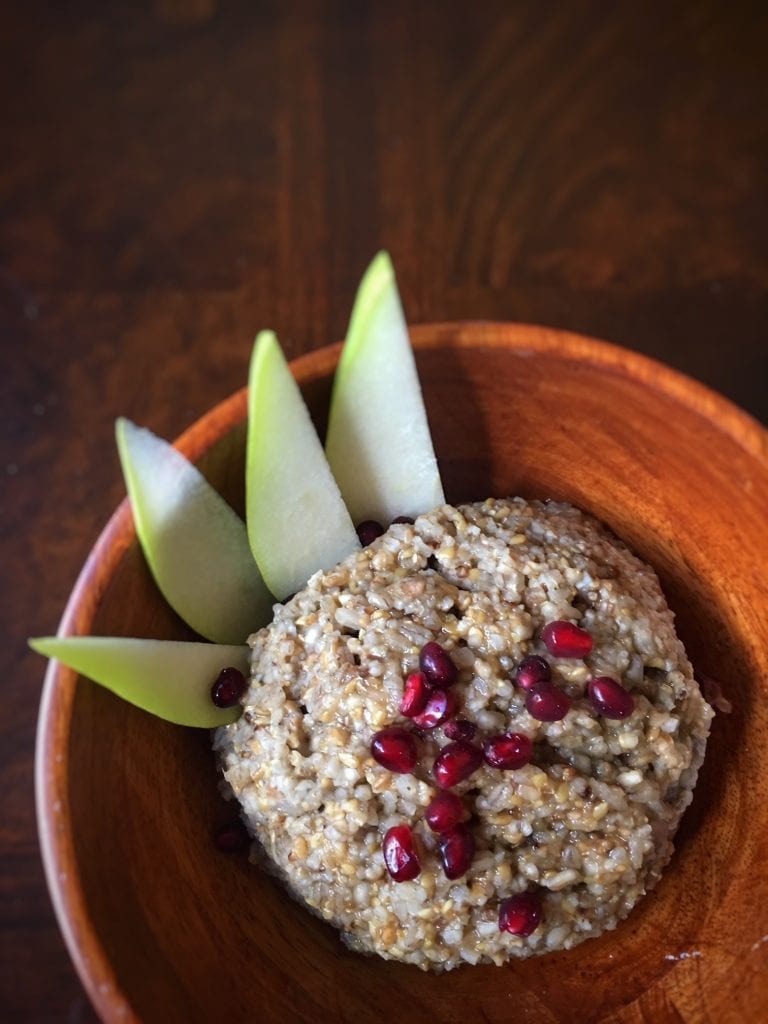
Cena bene and good eating to you!
[large pic]
Feel free to leave comments or suggestions about this article using the comment form below. Did you try this recipe? If so, feel free to join the discussion and post photos on Tavola’s Facebook page.
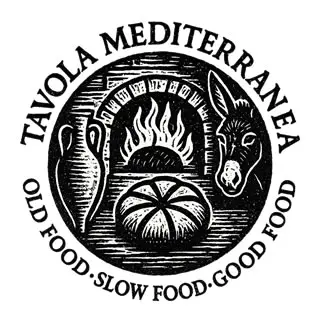





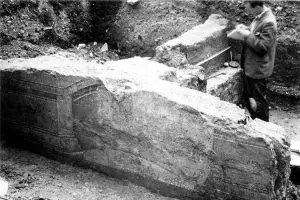


The photo of the two Roman coins says, “1st c. AD Roman coin with Ceres and Wheat Chaffs”. It can’t be “chaff”, can it? That’s the husk of the wheat that is discarded. What is shown is probably “ears of wheat”, “:stalks of wheat”, or “wheat spikes” since the grains are definitely depicted. The chaff doesn’t include the kernel wheat seed/grain. If one imagines more wheat stalks, it might be wheat “sheaves”, but not “chaffs”.
You might like to know that in addition to food, polentum was used boiled with various liquids as a poultice for a number of problems. Such was its common use this way that the late third century C.E. text, the Medicina Plinii mentioned it in its prologue as something handy for travellers to keep with them in their equivalent to a “first aid kit”.
Thank you so much for posting this as it allowed me to see what it looked like, and I was able to share it with students who attended a reading group a little more than a week ago to discuss that prologue.
This is so interesting, Yvette. A poultice makes sense if you cake it on and then let it dry out. It very well could have extracted things or soothed the skin. So cool! – Farrell